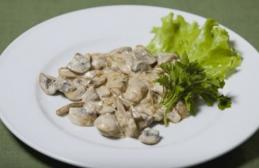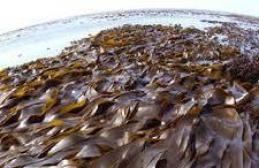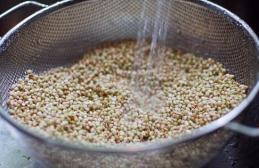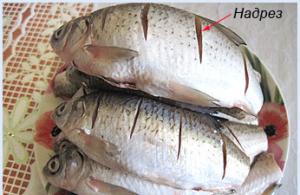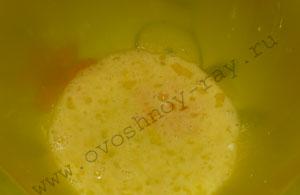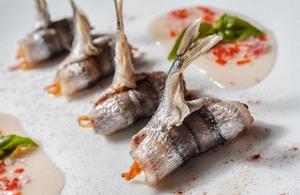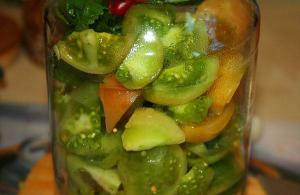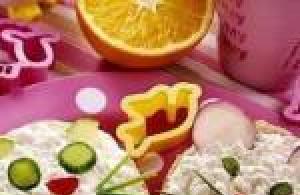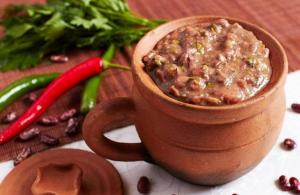Interesting crafts are a wonderful addition to any holiday, including the Holy Day. The kids willingly make crafts on the theme, turning available materials into Easter attributes with their own hands.
One of these materials can be salt dough or homemade plastic mass for modeling.
The only difference in kneading them is that when preparing salted dough, the resulting substance does not heat up on the stove, but when preparing the mass, it warms up to the point where the edges of the lump begin to lag behind the walls and bottom of the pan. In addition, citric acid can be added to the mass. It gives a special airiness.
Before you make it, you need to figure out exactly what form the finished product will take. It can be a three-dimensional or flat figurine, applique or panel. For example, as a craft for the holiday, you can make a panel from dough or paste on a cardboard base, depicting an egg that has just hatched from an egg. Any child can certainly cope with this task.
To work, in addition to cardboard and modeling mass, you will need a stack, a rolling pin, paint and a brush.
Let's get started.
Using a rolling pin, roll out a small oval lump, giving it an egg shape. We place this blank on cardboard.

Make a zigzag cut using a stack. This cut should divide the workpiece into two parts - the upper (smaller) and lower (larger).

Roll out another oval cake.

On this flatbread we place the lower part of our first (egg-shaped) piece. We trim the bottom edge with a stack so that it is even.

We trim the sides of the bottom cake, making it slightly narrower than the fragment with a zigzag edge. Place the upper part of the first piece on top of the bottom cake.

We sculpt the beak, eyes and wings.

Attach the wings and paint the middle yellow.

Alina Rudenko
Program content: To develop coherent speech, thinking, and attention of children in the game “Find the Differences.” Continue to learn how to sculpt objects from several parts, correctly conveying the shape and their location. Use natural materials in your work, develop your imagination. To cultivate goodwill in children and a desire to help the game character - the chicken.
Materials for the lesson: For each child: yellow salt dough, working cardboard or modeling board, sunflower seeds for the beak, beads for the eyes, twigs for the legs. For the game “Find the Differences” - 2 pictures of chickens. For the game - staging the song “Chickens” - a chicken mask for an adult, chicken masks. Test composition: 1 cup flour, 1 cup salt, 1 tbsp. spoon of vegetable oil, 0.5 cups of water. To obtain a yellow color, add gouache to the finished dough and mix thoroughly.
Progress of the lesson:
Give the children a riddle about chickens:
Yellow lumps squeak,
These are all sons and daughters
Mom clucks: Ko-ko-ko,
Don't go far!
Don't play hide and seek with your mom.
Children, who is she? ... (Chicks)
Invite children to look at 2 paintings about chickens, conduct them with children attention game "Find the differences". Give children the opportunity to find the answers themselves.

Ask the children what the mood of the chickens, of which there are many in the clearing, and of the chicken that is alone. In order for the chicken not to be sad, you need to make him friends.
Material for work is prepared on the tables.
The teacher invites the children to look at the chicken. Clarifies that the dough needs to be divided into 2 parts. One is larger for the body, the second is smaller for the head. Roll the dough for the body using circular movements of your hands. After this, place a piece of dough on cardboard or a modeling board and flatten it. Then we sculpt the chicken’s head and attach the legs from twigs. After this, we make the chicken a beak from a sunflower seed and eyes from small beads.
The guys get to work. The teacher provides individual assistance.
After the children have finished their work, the teacher offers to gather the chickens together in the clearing. Praise all children for their help.




In conclusion, invite all children to play a game - a dramatization of the song “Chickens” by the muses. Filippenko sl. Volgina. “Turning” into chickens:
1, 2, 3, 4, 5, we'll go for a walk now and now you won't

guys, but funny chickens. (The teacher is a chicken, the children are chickens. Wear masks. The adult sings and shows the movements, the children repeat.) You can play this game several times.
1. The chicken went out for a walk,
Pinch some fresh grass,
And behind her are the boys,
Yellow chickens.
2. "Ko-ko-ko, ko-ko-ko,
Don't go far
Row your paws,
Look for grains!"
3. Ate a fat beetle
earthworm,
We drank some water
Full trough.


We have such a wonderful clearing with chickens!

The interior of our group is decorated with children's works made of salty
test. Since not all the chickens fit in our clearing, we also ended up with individual work.

All the kids enjoy making dough crafts and look forward to new ones.
The master class was conducted by Olga Sitnikova.
How much time do we spend in the kitchen? According to the latest scientific research - eighteen days a year, or about three years of your entire life. This is a general average figure typical for Western Europe. They are used to minimizing domestic work, and the culture of eating outside the home is considered the norm. We, the heirs of the USSR, should add another couple of years on top. Especially if we combine the kitchen with an impromptu creative workshop.
This is the center of our home universe. We come here inspired, in the mood for an artistic “exhalation.” But, you must admit, standard cooking utensils decorating the walls are a weak motivator for a handmaker. Something else is required. Something pleasing to the eye, putting you in a creative mood, helping to bring ideas to life. At the same time, something suitable for the kitchen environment. Maybe a miniature Ryaba chicken made from salt dough?
Materials:
choux salty dough;
acrylic paints (can be replaced with oil or gouache);
brushes;
sponge (or a piece of regular foam sponge);
cocktail straw;
food foil;
nail scissors and a large “gypsy” needle as a stack.
Recipe for choux pastry.
Flour (2 cups), salt (1 cup), water (2 cups), sunflower oil (1 tablespoon), citric acid (1 tablespoon). Mix all dry ingredients (flour, salt, citric acid). Heat water and sunflower oil in a saucepan almost to a boil (until the first bubbles appear), remove from heat and immediately pour into a container with the dry mixture, mix everything vigorously with a fork or mixer.When the mixture has cooled slightly, knead with your hands. The dough should be soft, homogeneous, smooth. Thanks to citric acid, which acts as a preservative, it can be stored for quite a long time even at room temperature (tightly wrapped in a plastic bag).
How to make chicken from salt dough.
Figurine modeling. We crumple the food foil into a lump approximately the size of a chicken egg - we prepare the basis for the body, neck and head of the future Ryaba. 1
1
Roll out a voluminous flat cake from choux salted dough (can be replaced with cold porcelain or any plastic polymer clay), place it on the base. We smooth out the seams.
 2
2
From a small teardrop-shaped piece of dough we form a chicken beak. Having slightly moistened the wide part with water, apply it to the head and press. Use a stack to press the grooves along the beak, with the nostrils on top.
 3
3
We place a plump “pancake” of modeling mass on the top of the chicken’s head and form a comb.
 4
4
We fit a small drop of dough under the beak, cut it vertically with nail scissors and round off the sharp edges with a stack - the “earrings” are ready.
 5
5
Detailing and invoicing. For the tail, roll out a triangular piece of dough. We adapt it to the chicken’s body like a tent.
 6
6
Moisten the joint with water and smooth the seams thoroughly. We cut the feathers with nail scissors.
 7
7
Using the same principle, we make wings: we apply semicircular pieces of dough perpendicular to the body, use scissors to form feathers and carefully lay the finished wings, pressing them to the chicken sides.
 8
8
We wet the seams and iron them. Use the round end of the brush handle to press through the eye sockets.
 9
9
At the same time, carefully lift the dough shell from the inside and form the chicken cheeks.
 10
10
Roll two small balls from the modeling mixture, place them in the eye sockets, and press lightly on top. So that the dough fills the indentations well.
 11
11
The final step is imitation of feather cover. We will need a plastic cocktail straw, preferably with an oblique cut. Methodically sticking a simple tool into the dough, we leave many symmetrical horseshoe marks on Ryaba’s body.
 12
12
With the sharp end of a stacking needle, we pass along the perimeter of the orbit (at the border with the eyeball), leaving a trace of deep punctures. Having completed the invoicing procedure, we send the chicken to dry in the oven (set the minimum temperature, leave the door ajar). The dried dough becomes white, hard and even translucent.
Painting and decoration. The chicken is ready for painting. We dilute black acrylic paint with water (do not overdo it - too much liquid can soak the dough and ruin the work). Take a soft, medium-sized brush and quickly and confidently apply the first dark tone. We try not to miss a single notch or recess.
When finished, lightly dry the figure in the air, and then carefully wipe off the paint from all protruding parts with a damp textile cloth (we do this without strong pressure, otherwise we risk smoothing or damaging the textured pattern on the moistened dough). Our chicken turned from a colorless laying hen into a real Ryaba.
 13
13
We dip the sponge into white paint, blot off the excess and use a semi-dry tool to go over the wings, tail, neck, chest, beak and crest with short pokes.
 14
14
Highlighted areas will highlight the texture. In addition, subsequent color layers - purple and yellow - will fit better on them. Apply them with a semi-dry sponge.
We cover the beak with purple paint. We paint the comb and “earrings” with a brush, using a dark red (carmine) color. We lightly go over the top with a dry brush and black paint, clarifying the contours. Cover the eyeballs with a thick white layer. Use a thin liner to draw black pupils. The closer they are shifted to the bridge of the nose, the more comical the bird’s appearance.
 15
15
Well, the chicken is ready (if desired, you can additionally coat the figure with varnish). All that remains is to place her in a nest made of raffia or sisal, and figure out in which part of the kitchen to build an impromptu chicken coop.
Take note: Nests with such chickens look great on glass jars or glasses. Especially if you fill transparent containers with eggs - real quail and/or artificial decorative ones.
In this case, the composition takes on a bright Easter character and may well serve as an element of holiday table decor. And the rest of the time it will simply please the eye, evoke a spontaneous smile and put you in a creative mood. May inspiration always accompany you!
We will need:
for salt dough:
flour - 2 cups;
salt - 1 glass;
water - 3/4 cup;
for crafts:
salty dough;
plastic knife;
toothpicks or sticks;
brush;
colorful paints
1. Knead soft and elastic salted dough. We form 2 balls: a small one for the head and a large one for the body of the chicken. Then we roll up 2 more parts: the neck and legs.
2. Roll up a thin strip and cut it with a plastic knife so that you get a fringe. It corresponds to the feathers that we attach in several rows to the neck of our bird.

3. We form an oval, squeeze it and attach it to the body as a wing.

4. We make a comb with a beak and install them in the appropriate places on the chicken’s head. Use a toothpick to make a hole on the head for the eye.
5. Form a small cone for the ponytail and attach it to the body. Leave the mother hen to dry.

6. By analogy, roll balls for the body and head of the chicks. We will not make a neck with feathers. We form the legs, wings and tails of the chickens.

7. Paint the head and body of the chicken orange.

8. Paint the wing and feathers yellow, the rest of the details red.
- Materials and tools: salt dough, knife, stacks, garlic press, vegetable peeler, manicure file, toothpick, black allspice peas, brushes, paints, colorless quick-drying varnish.
- Making a nest.
- Roll out an oval cake 0.5 cm thick - the base of the nest.
- We will make the straw sides of the nest using a garlic press. Place the “straws” in parts along the edge of the cake, moistening it with water.
- We decorate the nest with a stack.

- We leave the product for a day to air dry so that it does not become deformed in the future.
- Let's make a chicken.
- We prepare the body.
- Our hen will serve as a stand for the Easter egg. Therefore, using a spherical mold, previously lightly greased with vegetable oil, we make a depression in the workpiece and form the breast and neck of the future chicken.
- In salt dough modeling, you can use various objects as a stack. In this work we will use a vegetable peeler and a manicure file. Using a vegetable peeler, feather the chicken breast.

- We insert a toothpick into the neck of the chicken, leaving 1.5 cm, so that later we can firmly attach the head.
- We connect the nest and the body to each other. Carefully remove the auxiliary spherical mold.
- We roll out the wing blanks to about 1 cm thick, use a vegetable peeler to make feathers and attach them to the body, not forgetting to moisten them with water.

- The basis of the chicken tail will be an oval cake approximately 0.7 cm thick. We make the plumage by analogy. We trim the edge of the tail according to the pattern of the feathers. To make the cuts even, smooth them with a finger moistened with water.
- We attach the tail to the body. To give it shape, I placed an apple and sprinkled it with flour. When the dough dries and hardens, it can be removed.

Roll a ball for the head. We make a scallop, using our fingers and a stack we give it the desired shape.

Let's start decorating the eyes. We outline their location. Making dents with the stack. Then, using a manicure file, press the eye into a flower shape. We make the pupil from allspice peas.

We sculpt the beak and attach it to the head.

After moistening with water, attach the head to the body. Let's decorate and further strengthen the head by attaching a small thin roller at the junction. Decorate the chicken neck with individual “feathers”.
We put earrings on our queen.



A day later, when the product has hardened, we finish decorating the chicken - add leaves and leave for further air drying.
- You need to take oven drying very seriously. I recommend carefully reading the article “Drying. Baking. Browning." It will be very disappointing if the product is damaged during baking.
- We paint dried chickens and hen with paints.

- After making sure. Once the products are dry, coat them with colorless quick-drying varnish.
Well, we have finished our work. This cute chicken family will decorate your holiday table.
Thanks http://samodel-ka.ru/podelki-iz-solenogo-testa/

